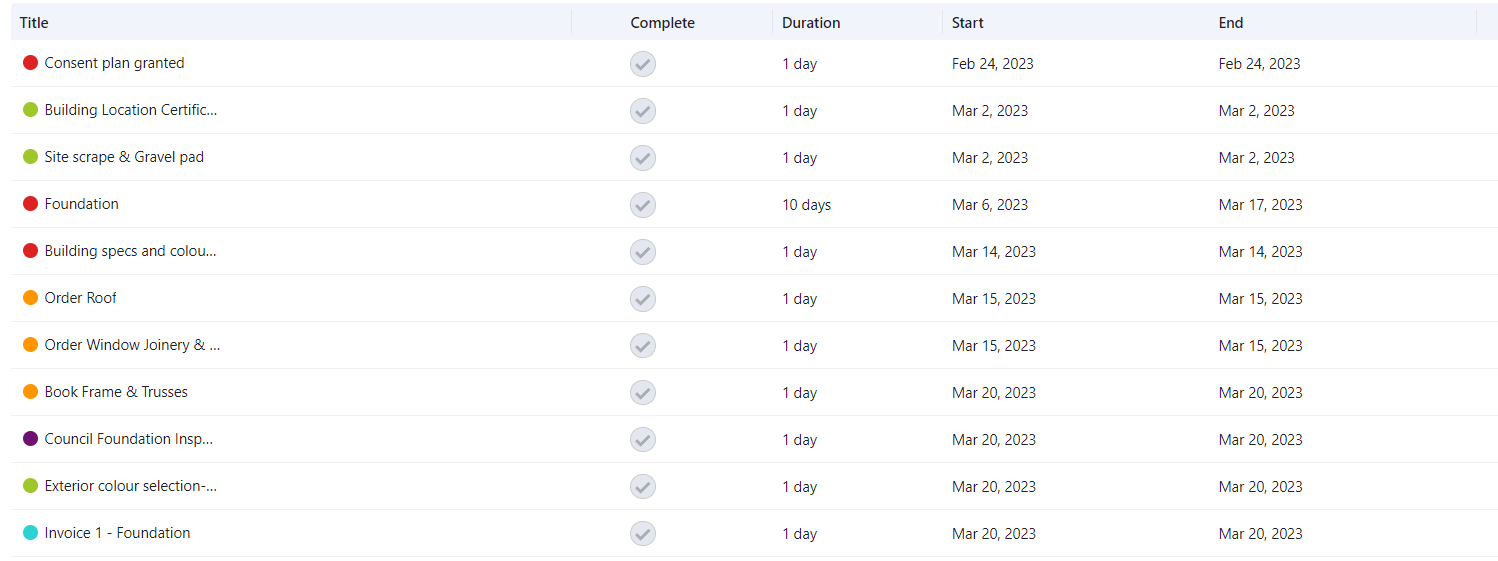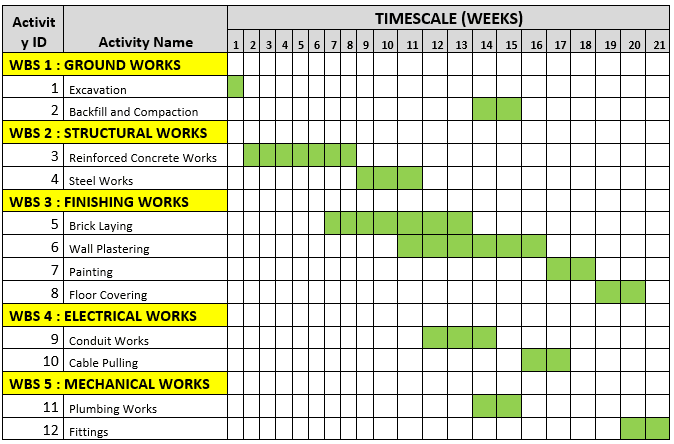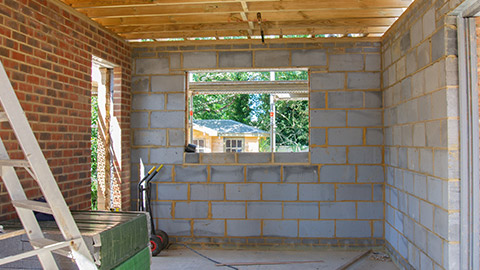In this Scheduling Process topic, we will examine the strategies used to plan and schedule a construction schedule or time activity programme.
Our aim in this topic is to:
- Clarify the methods used for the sequencing of construction activities.
- Establish a construction schedule or time activity programme. (We will use both terms interchangeably throughout this topic).
Construction project sequencing is a preliminary step in incorporating all the project activities within the given time frame and under the necessary project budget.
At this opening stage of construction scheduling, the team chooses the schedule, action plans, policies, and procedures to reach its required project delivery.
The reason for planning and scheduling is that during a major construction project, the lead site contractor must implement procedures at the relevant time with their subcontractors to keep the original construction schedule under continuous review.
This review may be weekly or monthly progress checks at and around the site level.
Therefore, creating these construction plans is the main central point for monitoring and evaluating all contributing workers' job activities on site.
There are direct and indirect stakeholders involved in a construction project.
As a site supervisor, you will be in the brackets of a main contractor group. This is your direct line of report. The diagram above illustrates the project's close, direct relationship and responsibilities.
Direct Stakeholders of a Construction Project
The following are the direct stakeholders of a construction project:
- The Client or Project Owner
- Main Builder or Contractor (the building company you work for)
- Subcontractor or additional "Subbies." (electricians, plumbers, painters, etc.)
- Vendors or Material Suppliers (general building suppliers such as Placemakers, Mitre 10, Bunnings or specialist suppliers such as doors, etc.)
- Consultant and Specialist Consultant (architects, engineers, interior designers, surveyors, etc.)
- Government Authority (local councils, etc.)
Indirect Stakeholders of a Construction Project
There are also indirect stakeholders of a construction project.
According to this diagram, there are indirect parties that you might not interact directly with but could be affected to some degree because of the construction project. (Ng and Banaitis, 2017)
| Internal stakeholders | External stakeholders |
|---|---|
|
|
The sequence of work to be followed in building construction is the most important construction procedure.
Without this thought-out sequencing of activities of what needs to be done, you and your team could encounter potential sub-contractor conflicts or, worse, potential building code standard issues, which could result in completing the project inefficiently, over budget and/or over time.
Your project programme schedule should be reviewed regularly to identify any potential problems as to where things may have not gone according to plan and where additional work or workers may need to be incorporated.
On any construction project, communication in regular site meetings by its workers is essential to monitor the process.
These meetings should be held to improve communication links between the parties involved; they are also used to help:
- Collect and distribute project information.
- Review the current situation.
- Consider ideas for resolving bottlenecks.
- Consider the opinion of other parties.
- Develop a team approach to problem-solving.
- Discuss problem areas and suggest alternative solutions.
- Decide on appropriate action going forward.
These review meetings should be recorded, and any changes or variations made to the project should be documented accordingly in your original project scheduling.
Site monitoring
Oversight and monitoring of the project process are necessary to ensure the building work is carried out as set out by the original master program.
Conducting good on-site monitoring will assist you in identifying issues and dealing with any particular problems as soon as they arise, so "Fixing the issue before it becomes a bigger issue".
The following short video discusses construction project scheduling and the basics of developing, implementing, monitoring, and controlling a project schedule. Watch the video and answer the questions that follow.

A time activity programme is a means of effectively monitoring the actual progress of a building project. The sequence of construction activities must proceed as smoothly as possible.
Forward planning and careful estimation of the time scale required to complete the different activities and operations will enable progress to be regulated, monitored, and reviewed.
The time scale for which operations can be based can be gathered from similar work previously completed. This can then be converted into estimating the hours required to complete a similar section of work or activity.
As the project progresses, the time taken to complete each particular operation is entered against the original programme time allocation. From this visual information, a comparison of the combined operation progress can be made. Areas of concern around the time scale can be quickly identified, and effective steps taken to remedy or fix the situation.
Preparing a Time Activity Programme
Time activity programme objectives must be carefully planned and organised by those involved.
A timetable for construction operations must be easily interpreted and accessible to all the people involved in the construction project or section.
The details to include in a schedule include:
- What tasks need to be completed?
- How long do they take to complete, from start to finish (identify critical path)?
- What materials, resources, plant equipment or staff are needed to complete the required activity?
A time activity programme will inform:
- The client
- The site supervisor
- The project manager
- The contractors and subcontractors
A time activity programme also provides information such as critical dates, times and duration for:
- Inspection dates.
- Any holiday dates or periods.
- Project overall start and finish dates.
- Each activity or operation start and finish dates.
- Material delivery dates.
- Availability or hire for tools, specialist plant equipment, machines, or vehicles.
In and around construction sites, there are two different methods of recording programming information. We can use the following:
- The list method,
- The arrow diagram method, or
- The bar chart method (Gantt chart).
In the day of modern technology, various scheduling tools are available online that make construction management and planning easier.
Keep project scheduling on track and make displaying information to the client easier. Builders of all types are now relying on mobile and desktop apps to keep organised when they're on a job site. These cloud-based tools are designed to help builders, contractors, and more do their jobs efficiently and accurately.
Further Reading
In the following link for further reading, BRANZ Renovate NZ has summarised what the "Construction Plan" stage generally involves.
Online building scheduling software is a game-changer for construction projects. It's like a digital planner that makes construction work more organised and efficient. It allows teams to work together in real-time, keeps all project information in a single place, and helps adjust plans quickly. This technology is now a crucial tool in the construction industry, helping teams manage resources, meet deadlines, and improve project performance.
The late 1980s saw the emergence of user-friendly and desktop-based scheduling software, making it accessible to a broader range of industries and professionals. Software like Microsoft Office was introduced during this era. Since then, more software has been introduced to the market and adopted worldwide, including:
- Microsoft Excel
- Google Spreadsheets
- Asana
- Trello
- Monday
Construction-specific scheduling software is customised to meet construction projects' unique requirements and challenges. It provides industry-specific terminology, templates, and features that generic scheduling software may lack.
Here are the top five benefits of using construction-specific scheduling software:
-
Efficient Project Planning: Construction-specific scheduling software enables more precise and efficient project planning. It allows you to create detailed project schedules, allocate resources, and sequence tasks to optimise project timelines.
-
Improved Resource Management: These tools provide features to manage labour, equipment, and materials effectively. You can allocate resources based on availability, track utilisation, and prevent overallocation or conflicts.
-
Enhanced Collaboration: Construction scheduling software often includes collaboration features that allow project teams to communicate, share updates, and work together in real time. This fosters better teamwork and minimises miscommunication.
-
Optimised Task Sequencing: The software often includes features like critical path analysis, identifying the most critical tasks that can impact project deadlines. It helps you focus on tasks that need special attention to avoid delays.
-
Project Visibility and Reporting: Construction-specific scheduling software provides insights into project progress, delays, and overall performance. You can generate reports and dashboards to inform stakeholders and make data-driven decisions.
Performance.NZ is a team working alongside big commercial construction companies delivering different technological approaches and advancements to various projects to support the build. With their deep understanding of construction materials and methodology, they ensure a comprehensive partnership with the use of technology from the start.
Read under “Construction Technology” how their approach leads to achievable designs, with robust construction sequences and planning to exceed expectations while supporting the delivery of projects on time and within the company's budget.
The following are examples of widely used construction-specific scheduling software in New Zealand.
Common features included in this software are:
- project management,
- estimating,
- job costing,
- scheduling, and more.
The software is popular among residential builders and contractors for its ease of use and ability to streamline various aspects of construction projects.
Scheduling Presentation Methods
List Method
The List method lists out every activity that needs to be done in a sequential order.

Arrow Diagram Method
The following image shows an arrow diagram (an activity network diagram or critical path method) used to determine the optimal sequence of events and their interconnectivity.
The site project is broken down into a series of stages or elements of work. These stages will include the activities or descriptions of what needs to be done. The arrows indicate which activities need to happen next in the process. The arrow's length does not indicate the time allocation for the activity.

Bar Chart method
This planning method is particularly useful for plotting the progress of all the various site operations and activities. These "t" bar style charts specifically identify:
- The time spent on each activity.
- The quantity of work completed on each activity to date.
- The percentage of work completed overall on each activity.
All sub-contractors and other interested parties must be aware of their responsibilities and requirements related to the programming, so any delay or overruns in providing their services can largely be eliminated and/or planned for.
Any avoidable delays should be communicated to the main contractor as soon as possible so that the overall programme can be adjusted and other affected parties can be informed.
The complex task of planning and organisation requires a lot of cooperation and communication among all the various construction trades, material suppliers and other associated builders.
Below is a basic example illustrating a construction project.

Case Study
Home Office Construction

You are the site supervisor in charge for this project at Burwood, Christchurch. Your client is onsite with you to explain what they have achieved so far with their non-residential project. They have asked your company to continue with the rest of the tasks. The client requests that you give an overview of the process in their A4 diary with approximate dates.
You explain to them the following process:
- List Activities
- Sequence the Order
- Adding date and time frame. Promise to follow up with an updated online schedule when you're back online.
List Activities
To start, the builder needs to list all the activities required. At this stage, the order is unimportant.
| Get consents |
| Set-up/box slab |
| Concrete subcontractor lays slab |
| Materials arrive |
| Smash up the old slab (hire a concrete breaker) |
| Pre-slab inspection |
| Framing inspection |
| Final inspection |
| Sparky does wiring |
| Framing, cladding, roofing |
Sequence the Order
When all the activities have been listed, sequence the order accordingly.
| 1 | Get consents |
| 2 | Smash up the old slab (hire a concrete breaker) |
| 3 | Set-up/box slab |
| 4 | Pre-slab inspection |
| 5 | Concrete subcontractor lays slab |
| 6 | Materials arrive |
| 7 | Framing, cladding, roofing |
| 8 | Framing inspection |
| 9 | Sparky does wiring |
| 10 | Final inspection |
Adding date and time frame
Now, the activities or tasks generated can be placed in order, and a date or time frame can be attached to each step:
| 1 | Get consents | 21 days | 10/8 - 31/8 |
| 2 | Smash up the old slab (hire a concrete breaker) | 3 days | 1/9 - 3/9 |
| 3 | Set-up/box slab | 3 days | 4/9 - 7/9 |
| 4 | Pre-slab inspection | x | 7/9 |
| 5 | Concrete subcontractor lays slab | 1 day | 8/9 |
| 6 | Materials arrive | x | 9/9 |
| 7 | Framing, cladding, roofing | 4 days | 10/9 - 14/9 |
| 8 | Framing inspection | x | 13/9 |
| 9 | Sparky does wiring | 2 days | 14/9 - 16/9 |
| 10 | Final inspection | x | 17/9 |
The information can be used "as is" in a table form or entered into a "Gantt" bar chart.
The article from Building Guide.co.nz explains and outlines the project management planning process in detail, covering how to put scheduling together in a bar chart format and putting together checklist formalities associated with residential builds.
Every build is different, but key principles of project planning and organising followed by the parties involved will result in a successful build and help avoid costly problems and potential delays.
Activity
Research an online scheduling software you think you might be interested in using. Sign-up for a trial or a free version. Create an online version of the above case study.
Share and discuss your experience using that software with your tutor and peers during one of the Live Sessions.
